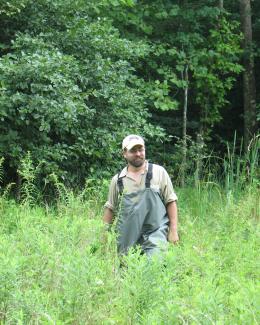Abstract
Increased vegetative growth and soil carbon (C) storage under elevated carbon dioxide concentration ([CO2]) has been demonstrated in a number of experiments. However, the ability of ecosystems, either above- or belowground, to maintain increased carbon storage relies on the response of soil processes, such as nitrogen (N) availability, to climatic change. These soil processes are mediated by microbial communities whose activity and structure may also respond to increasing atmospheric [CO2]. We took advantage of a long-term (ca 10 year) CO2 enrichment experiment in a sweetgum plantation located in Tennessee to test the hypothesis that observed increases in root production in elevated relative to ambient CO2 plots would alter microbial community structure, increase microbial activity, and increase soil nutrient cycling. We found that elevated [CO2] had no detectable effect on microbial community structure using 16S rRNA gene cloning libraries, on microbial activity measured with extracellular enzyme activity, or on potential soil N mineralization and nitrification rates. These results are similar to those found at other sites and are consistent with continued C storage in forest ecosystems in the near future.


